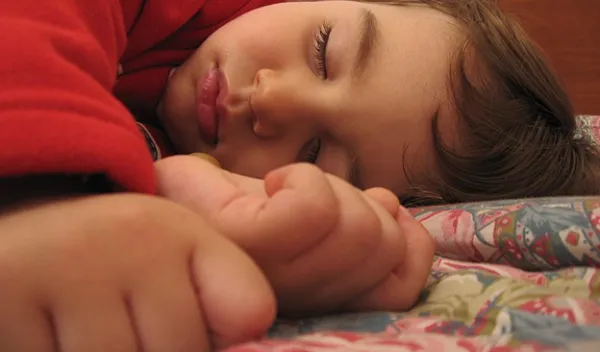
How sleep builds relational memory
Relational memory is the ability to remember arbitrary or indirect associations between objects, places, people or events -- such as names and faces.
Previous research has established that animal and human memory benefits from quality sleep. In a new U.S. National Science Foundation-supported study published in The Journal of Neuroscience, Maxim Bazhenov and Timothy Tadros of the University of California San Diego School of Medicine developed a modeling approach that may explain the underlying mechanisms that strengthen or create new relational memories during sleep.
"This new computational research provides insights into the importance of sleep for the consolidation of memory," said NSF program director Jonathan Fritz.
The authors developed an artificial model of two regions of the brain: the thalamus (involved in earlier sensory processing) and the cortex (involved in memory, learning and decision-making). The model simulated two major brain states: awake, when neurons are spontaneously active and optimized to process sensory input; and deep sleep, when intrinsic oscillations of electrical activity are generated, such as slow-waves.
The properties of the network model could be changed to promote transitions between wakefulness and sleep activity, like what the biological brain does every day.
In the cortical region, connections between the neurons were allowed to become stronger or weaker based on their activity, known as synaptic plasticity, which reflects the primary known biological mechanism for how memories are formed or erased.
"We modelled the cortex after visual processing, with one cortical layer representing primary visual cortex and another cortical layer representing associative cortex," said Tadros. "Every time one sees the same object, roughly the same neurons in the visual cortex would be active. If a person sees two objects in the same context, then these associations might be learned in the associative cortex by strengthening connections between neurons that represent each of the two objects."
The scientists trained the network in its awake mode to learn such direct associations, such as A+B or B+C but not A+C, then discovered that in the sleep mode, the model formed indirect associations: A+C.
"This happened because during sleep the neurons representing all three related items, A, B and C, spontaneously fired in close order, a phenomenon called sleep replay, which triggered synaptic plasticity and led to formation of strong synaptic connections between all these neurons," said Bazhenov. "Therefore, after sleep, activating any one group, such as A, activated all other related groups, such as B and C."
While primarily conceptual, the researchers said their computational model has real-world implications.
"One important impact of the study is informing future studies of disease, such as schizophrenia and autism spectrum disorder," said Bazhenov. "Research has shown that people with these conditions perform worse on relational memory tasks and have disrupted sleep, specifically slow-wave sleep.
"Our study suggests that focusing on improving slow-wave sleep to alleviate some of the cognitive symptoms associated with these conditions may be a more fruitful path forward than focusing on the cognitive symptoms exclusively."
